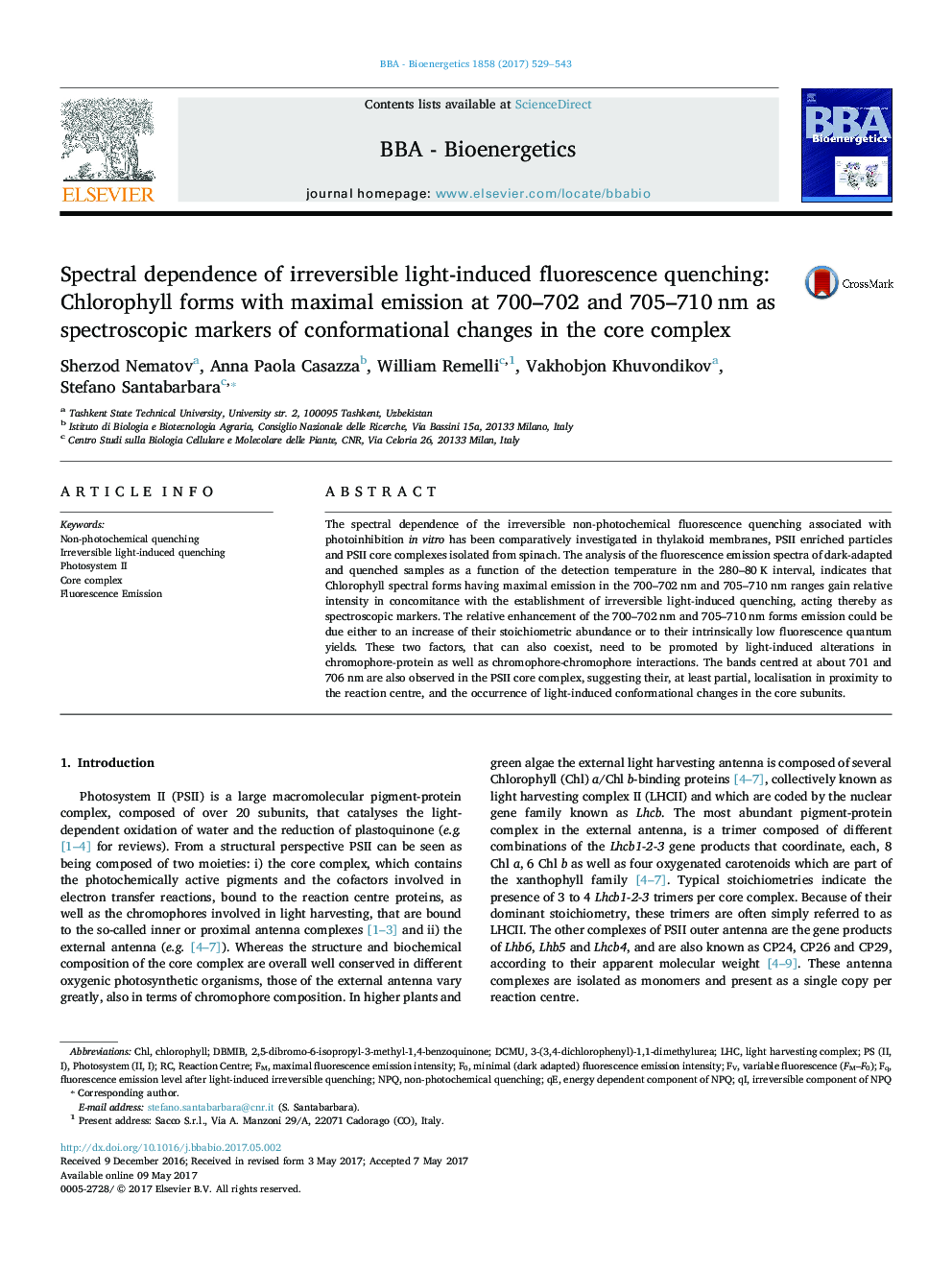| Article ID | Journal | Published Year | Pages | File Type |
|---|---|---|---|---|
| 5507195 | Biochimica et Biophysica Acta (BBA) - Bioenergetics | 2017 | 15 Pages |
Abstract
The spectral dependence of the irreversible non-photochemical fluorescence quenching associated with photoinhibition in vitro has been comparatively investigated in thylakoid membranes, PSII enriched particles and PSII core complexes isolated from spinach. The analysis of the fluorescence emission spectra of dark-adapted and quenched samples as a function of the detection temperature in the 280-80Â K interval, indicates that Chlorophyll spectral forms having maximal emission in the 700-702Â nm and 705-710Â nm ranges gain relative intensity in concomitance with the establishment of irreversible light-induced quenching, acting thereby as spectroscopic markers. The relative enhancement of the 700-702Â nm and 705-710Â nm forms emission could be due either to an increase of their stoichiometric abundance or to their intrinsically low fluorescence quantum yields. These two factors, that can also coexist, need to be promoted by light-induced alterations in chromophore-protein as well as chromophore-chromophore interactions. The bands centred at about 701 and 706Â nm are also observed in the PSII core complex, suggesting their, at least partial, localisation in proximity to the reaction centre, and the occurrence of light-induced conformational changes in the core subunits.
Keywords
Related Topics
Life Sciences
Agricultural and Biological Sciences
Plant Science
Authors
Sherzod Nematov, Anna Paola Casazza, William Remelli, Vakhobjon Khuvondikov, Stefano Santabarbara,
